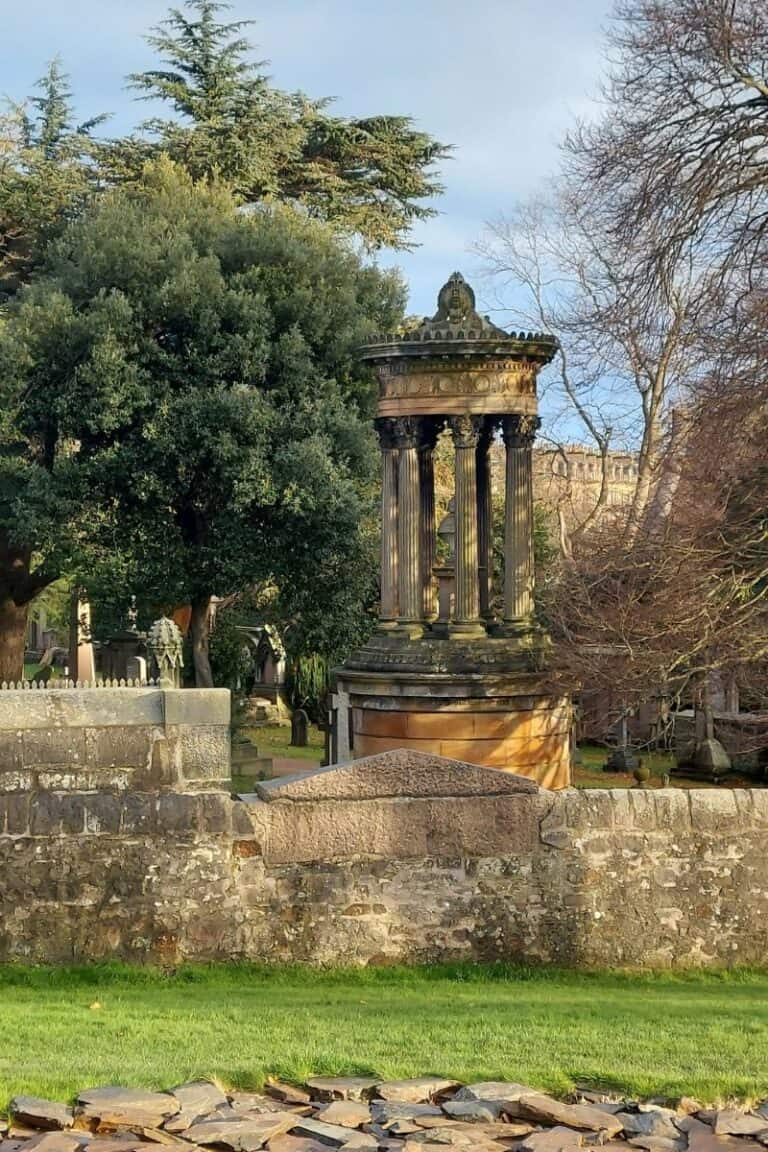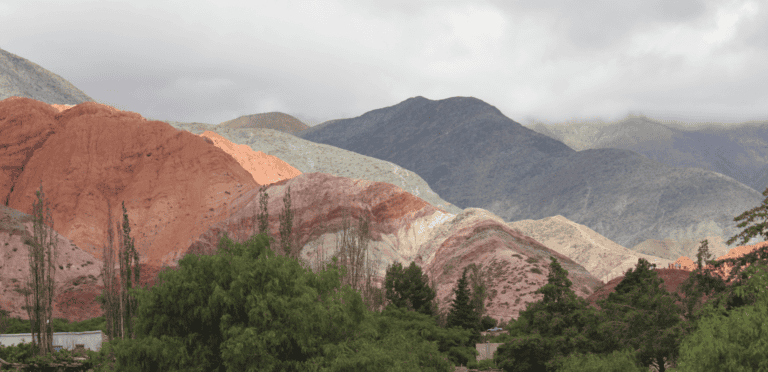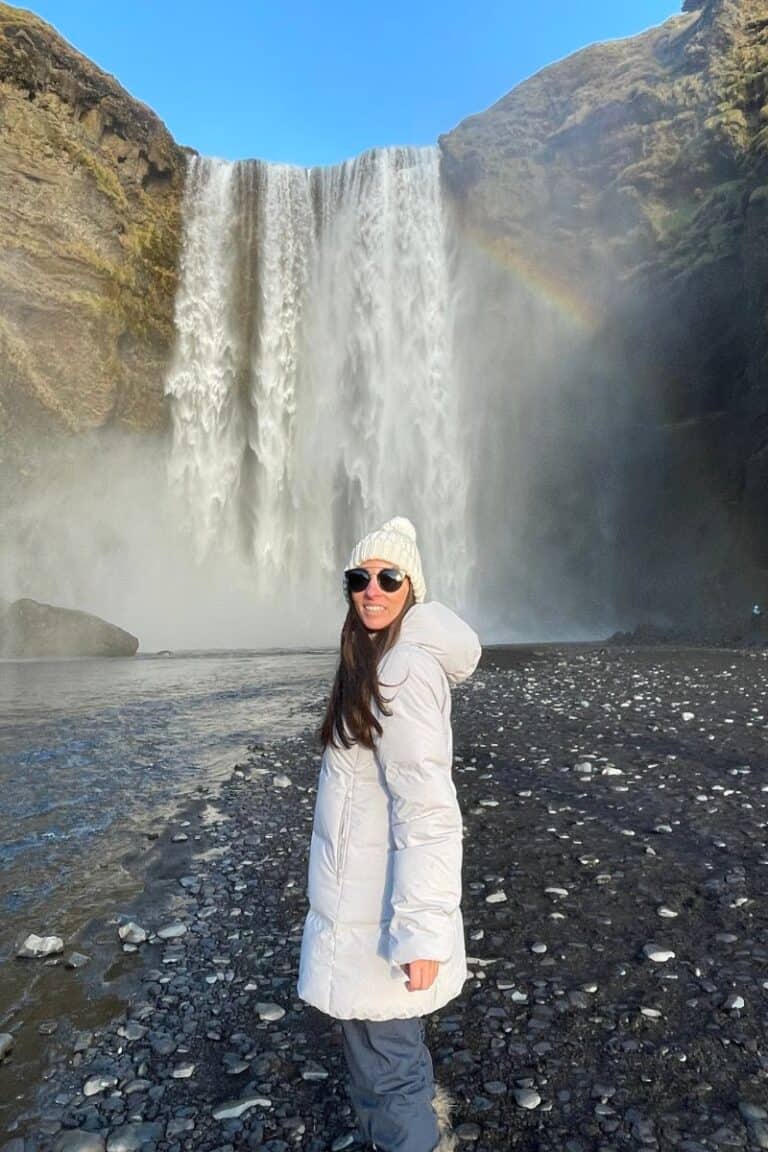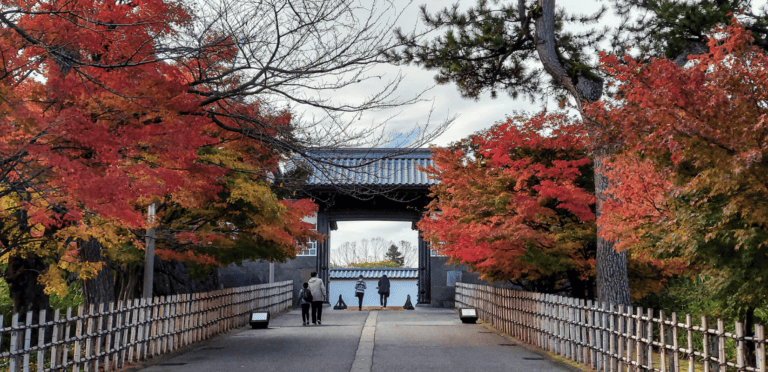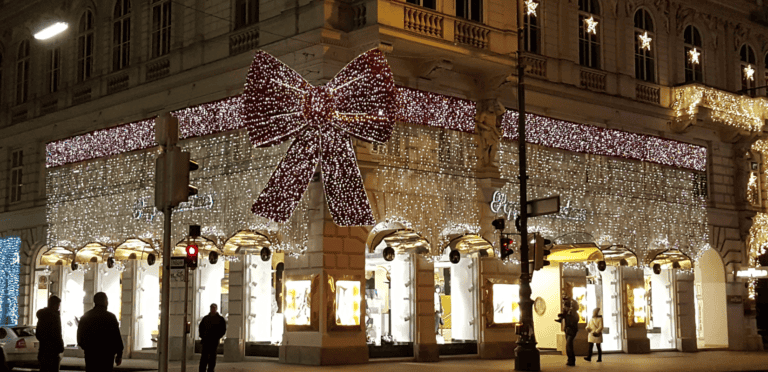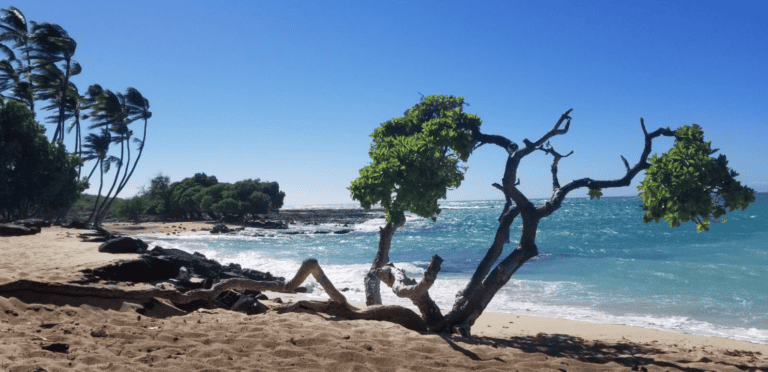Ultimate Guide To Visiting The Atacama Desert, Chile
Explore the ultimate guide to visiting the Atacama Desert in Chile. Find out how to get there and dive into must-see sights like Moon Valley, El Tatio Geysers, and the stunning salt flats.
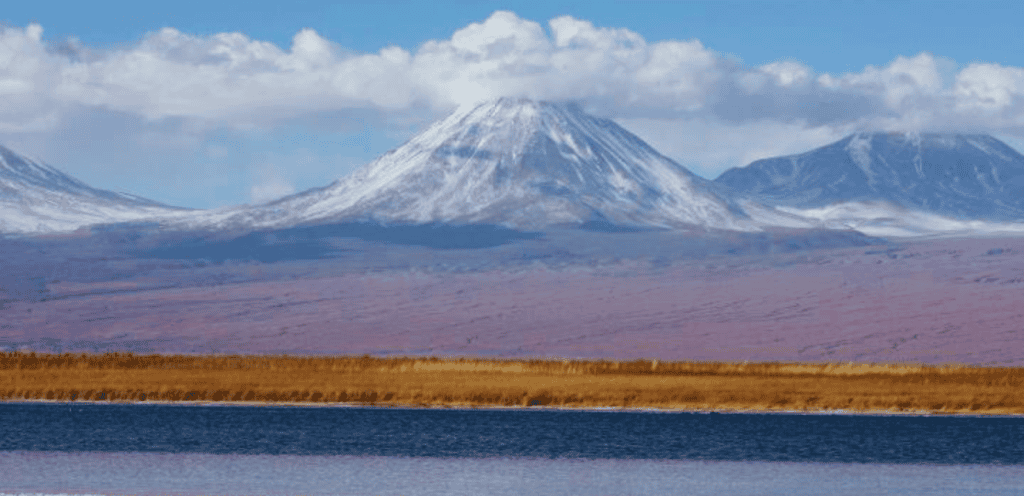
The Atacama Desert is located in the northern part of Chile and is a destination like no other.
It’s often described as the driest desert in the world, but that doesn’t begin to capture the otherworldly landscapes, vibrant culture, and adventurous spirit that define this region.
From vast salt flats and colorful lagoons to ancient petroglyphs and Moon-like rock formations, the Atacama Desert offers an endless array of experiences for adventure travelers.
This guide will walk you through everything you need to know to plan an unforgettable trip to the Atacama Desert, including how to get there and the must-see sights and activities in the region.
Getting to the Atacama Desert from Santiago
Your adventure to the Atacama Desert typically begins in Santiago, Chile’s bustling capital city.
There are several options for getting to San Pedro de Atacama, the gateway to the desert:
By Air: The Quickest Option
The most convenient way to reach San Pedro de Atacama from Santiago is by flying.
You’ll first need to book a flight from Santiago to Calama, the nearest airport to San Pedro de Atacama.
Several airlines, including LATAM and Sky Airline, operate daily flights between Santiago and Calama, which takes about two hours.
Once you arrive in Calama, you’ll need to take a bus or hire a private transfer to San Pedro de Atacama.
The journey from Calama to San Pedro de Atacama is about 100 kilometers (62 miles) and takes approximately 1.5 to 2 hours by road.
Transfers can be arranged in advance or booked at the airport.
By Bus: A Scenic Overland Journey
For those who prefer overland travel, taking a bus from Santiago to San Pedro de Atacama is an option, although it’s a long one.
The bus journey takes approximately 24 hours, covering over 1,600 kilometers (1,000 miles).
Several bus companies offer this route, including Turbus and Pullman.
We recommend using Pullman. We relied on this bus company for all our trips in Chile and found them to be punctual, offering good service, and ensuring a safe journey.
The buses are generally comfortable, with options for reclining seats and on-board amenities, but be prepared for a long trip.
By Car: A Road Trip Adventure
If you’re an adventurous traveler who enjoys road trips, you might consider renting a car in Santiago and driving to San Pedro de Atacama.
The drive is long, taking about 20-24 hours without stopping, so it’s best to break it up with overnight stays in cities like La Serena or Antofagasta.
Having your car gives you the flexibility to explore the desert at your own pace once you arrive.
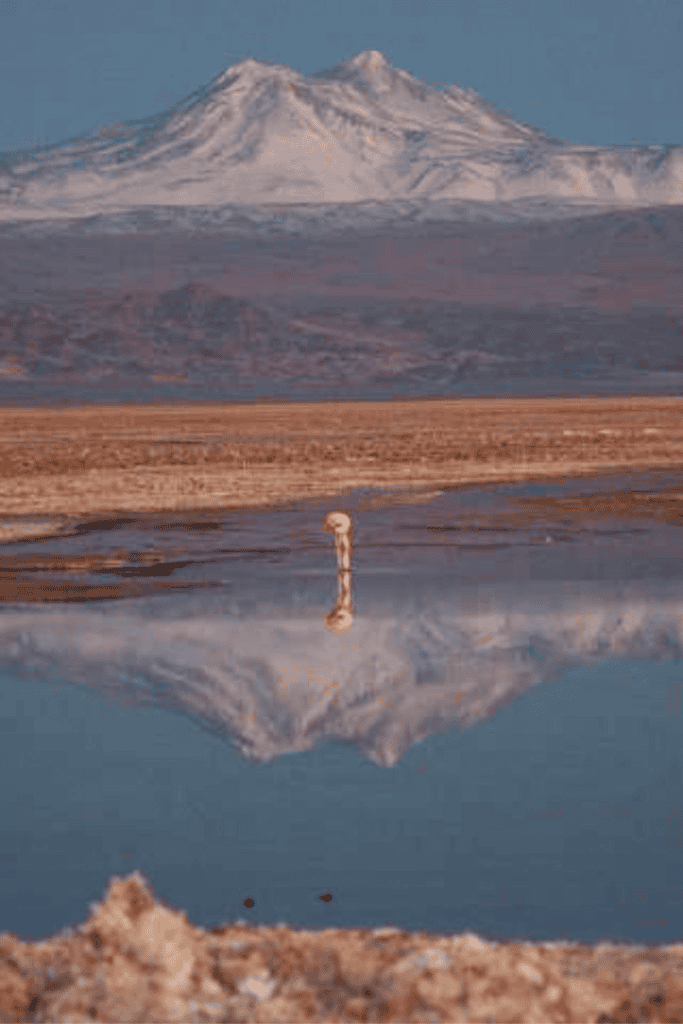
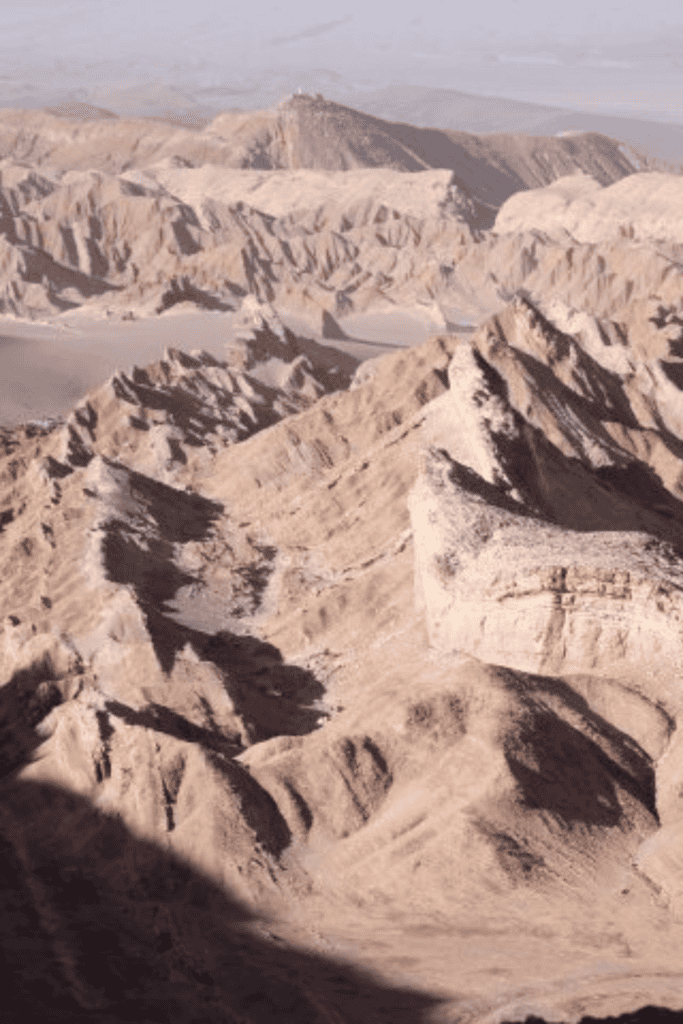
Things To Do In the Atacama Desert
San Pedro de Atacama serves as the starting point for exploring the incredible natural wonders of the Atacama Desert.
Staying in the heart of San Pedro de Atacama is ideal, as it lets you easily explore the town and book daily tours.
Though the town is small, it has a variety of accommodations to suit different budgets and preferences. As well, as restaurants, cafes, and shops where you can find souvenirs and enjoy local cuisine.
1. Moon Valley (Valle de la Luna)
One of the most iconic sites in the Atacama Desert, Moon Valley is known for its otherworldly landscapes that resemble the surface of the moon.
The valley is characterized by dramatic rock formations, vast sand dunes, and salt flats.
A visit to Moon Valley typically includes a hike through the area.
This gives you the opportunity to explore the unique geology and take in the panoramic views.
Sunset is the best time to visit, as the changing light creates a stunning play of colors on the rocks.
This tour was one of the most impressive experiences during our visit to Atacama. Walking through the rock formations felt like stepping onto another planet—this is as close as you’ll get to the moon!
Tip: Wear sturdy shoes and bring plenty of water, as the terrain can be challenging, and the desert heat can be intense. Also, bring a jacket, as it can get windy or rain unexpectedly.
2. El Tatio Geysers (Geyser del Tatio)
Located at an altitude of over 4,300 meters (14,000 feet), El Tatio is one of the highest geyser fields in the world.
To witness the geysers in action, you’ll need to wake up early for a sunrise tour.
As the sun rises, the cold morning air interacts with the geothermal activity, creating dramatic plumes of steam and bubbling pools.
The sight of these natural fountains against the backdrop of the Andes is truly unforgettable.
Tip: The early morning temperatures can be freezing, so dress in layers and bring warm clothing.
3. Rainbow Valley (Valle Arcoiris)
Rainbow Valley, or Valle Arcoiris, is named for the colorful rock formations created by the various mineral deposits in the soil.
The vibrant reds, greens, and yellows of the rocks make this valley a photographer’s dream.
The area is also home to ancient petroglyphs, offering a glimpse into the region’s rich cultural history.
Tip: Combine your visit to Rainbow Valley with a trip to Yerbas Buenas, where you can see more petroglyphs.
4. Cejar Lagoon (Laguna Cejar)
Laguna Cejar is a stunning turquoise lagoon surrounded by salt flats.
The high salt content of the water makes it incredibly buoyant, allowing you to float effortlessly.
This will give you a great opportunity to relax from all the hiking.
The lagoon is a popular spot for swimming and relaxing, but beware, the water can be quite cold.
In addition to relaxing, this spot is also perfect for capturing the reflection of the volcanoes in the lagoon—photos taken here turn out incredible.
Tip: The salt can be harsh on the skin, so rinse off in the freshwater showers after swimming. Bring extra clothes on your tour, as you’ll likely visit another site after swimming.
5. Baltinache Lagoon (Laguna Baltinache)
Like Laguna Cejar, Baltinache Lagoon is another beautiful saltwater lagoon where you can experience the unique floating sensation on the surface.
The lagoon is less crowded than Laguna Cejar, making it a more peaceful spot to enjoy the surreal landscape.
Tip: The road to Baltinache Lagoon is rough, so it’s best to visit with a guided tour or in a 4×4 vehicle.
Check out more POSTS ON SOUTH AMERICA

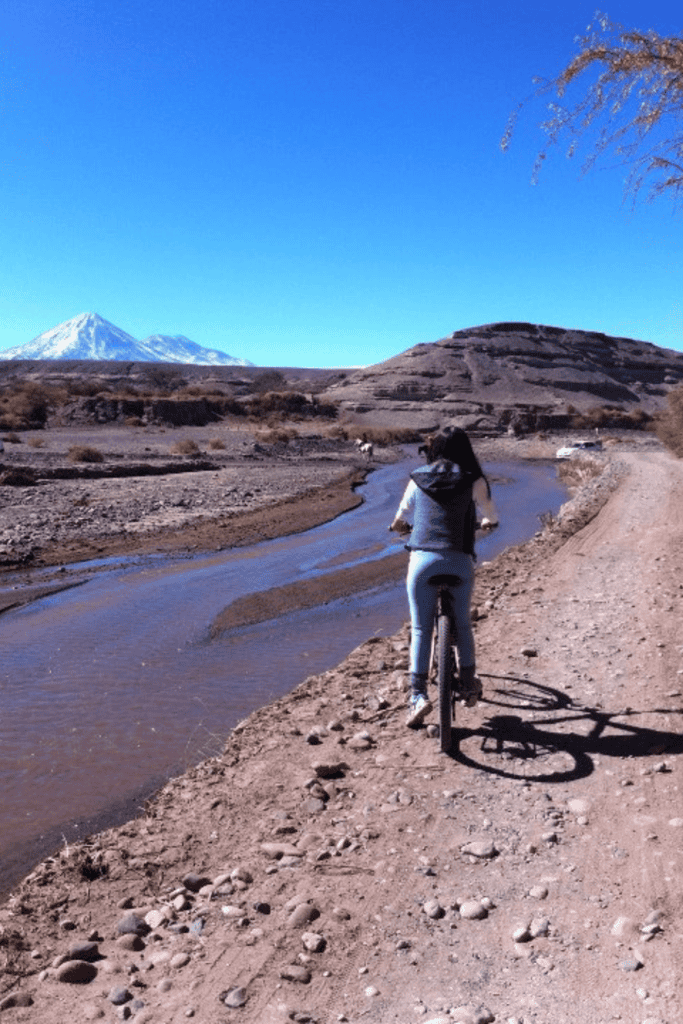
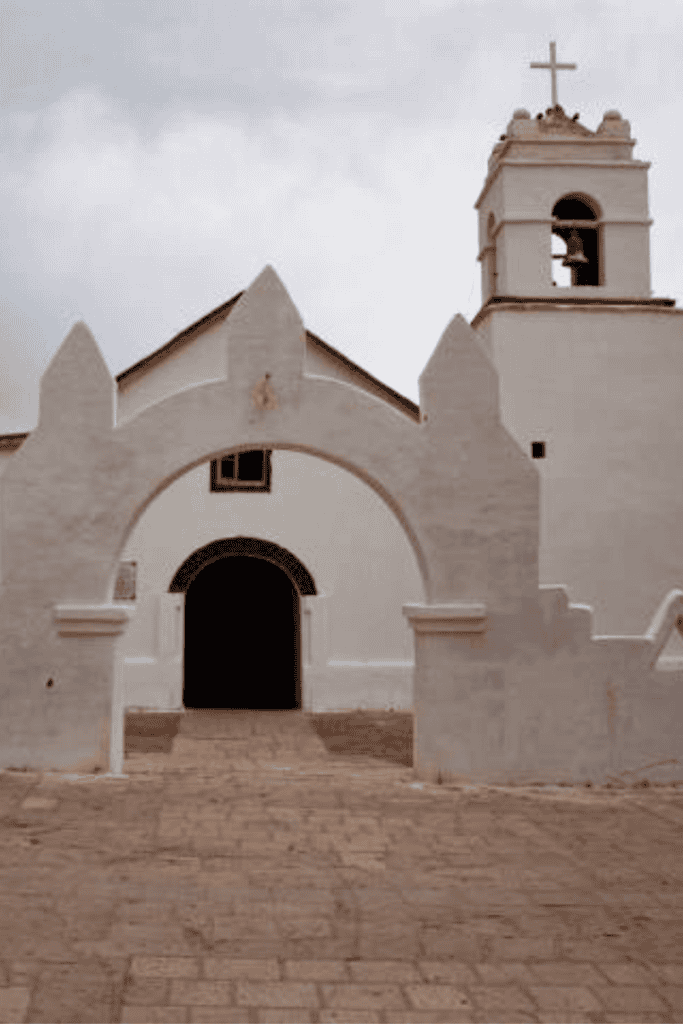
6. San Pedro de Atacama Town
San Pedro de Atacama itself is a charming town with a laid-back atmosphere.
The town is centered around a small plaza, where you’ll find a variety of shops, cafes, and restaurants.
It’s worth spending some time exploring the narrow streets, visiting local artisan markets, and soaking in the town’s unique blend of indigenous and colonial cultures.
Tip: Try the local cuisine, which includes traditional dishes like empanadas and quinoa-based meals.
7. Atacama Church (Iglesia San Pedro)
Located in the heart of San Pedro de Atacama, the town’s Catholic church is one of the oldest in Chile.
The adobe building, with its whitewashed walls and simple bell tower, is a beautiful example of colonial architecture.
Inside, you’ll find wooden beams made from cactus wood and simple, rustic decor that reflects the region’s heritage.
Tip: The church is open to visitors, but be respectful if a service is taking place.
8. Flamingo National Reserve (Reserva Nacional Los Flamencos)
This national reserve is a protected area that encompasses several distinct ecosystems, including salt flats, lagoons, and high-altitude wetlands.
The reserve is home to three species of flamingos (Andean Flamingo, Chilean Flamingo, and James’s Flamingo), which can often be seen feeding in the shallow waters of the salt flats.
The reserve is divided into several sectors, each offering different landscapes and wildlife-watching opportunities.
We recommend visiting the National Reserve at sunset for the best photos. The orange and pink clouds beautifully complement the flamingos in the water and the icy volcanoes in the background.
Tip: The Chaxa Lagoon is one of the best places to see flamingos up close.
9. The Three Marias (Tres Marías) in Moon Valley
Within Moon Valley, you’ll find a unique rock formation known as the Three Marias.
These three slender rock spires are said to resemble the figures of the Virgin Mary.
The Three Marias are a popular stop on tours of Moon Valley, and they make for great photo opportunities.
Tip: Respect the natural formations by not climbing on or touching them.
10. Atacama Salt Flats (Salar de Atacama)
The Salar de Atacama is the largest salt flat in Chile and one of the largest in the world.
The vast, white expanse of salt is interrupted by shimmering lagoons, where flamingos and other wildlife can be spotted.
The salt flats offer a stark, beautiful landscape unlike anything else on Earth.
Tip: Bring sunglasses to protect your eyes from the glare of the sun reflecting off the salt.
11. Stargazing in the Atacama Desert
The Atacama Desert is renowned for its clear, unpolluted skies, making it one of the best places in the world for stargazing.
Unlike other dark areas, the Atacama Desert enjoys unique atmospheric conditions due to its high altitude.
Several observatories in the region offer night tours, where you can view distant galaxies, nebulae, and planets through powerful telescopes.
Just imagine the experience of seeing the Milky Way stretch across the sky in such a remote setting. It’s awe-inspiring.
Tip: Book a stargazing tour in advance, as they are popular and can fill up quickly. Also, be flexible and prepared for stargazing tours to be canceled if the skies are cloudy on the night of your tour.
12. Red Rocks of Atacama (Piedras Rojas)
Piedras Rojas, or Red Rocks, is a stunning area where red-colored rocks contrast sharply with the deep blue of nearby lagoons and the white of salt flats.
The area is located in the high Andes, and the combination of colors and vast, open spaces creates a surreal, almost Martian landscape.
Tip: The altitude can be challenging, so take it slow and stay hydrated.
Practical Tips for Visiting the Atacama Desert
- Altitude: Many of the attractions in the Atacama Desert are at high altitudes, which can cause altitude sickness. Take time to acclimate by spending a day or two in San Pedro de Atacama before heading to higher elevations, and drinking plenty of water.
- Weather: The Atacama Desert has extreme weather conditions, with hot days and cold nights. Pack layers, including a warm jacket for the early mornings and evenings.
- Sun Protection: The sun is strong in the desert, so bring sunscreen, sunglasses, and a hat to protect yourself from UV rays.
- Water: Always carry water with you, dehydration is a genuine risk in the desert climate.
- Tours: Many sites in the Atacama Desert are best visited with a guided tour, especially if you don’t have a 4×4 vehicle. Tours can be booked in advance or through agencies in San Pedro de Atacama.
Your Atacama Adventure Awaits
The Atacama Desert is a place of incredible beauty and adventure.
From the surreal landscapes of Moon Valley and the salt flats to the vibrant culture of San Pedro de Atacama, there’s something for every traveler to discover.
Whether you’re floating in the salty waters of a lagoon, watching flamingos feed against a backdrop of volcanoes, or stargazing under some of the clearest skies on Earth, a trip to the Atacama Desert is sure to be an unforgettable experience.
Start planning your adventure today, and get ready to explore one of the most unique destinations on the planet.
